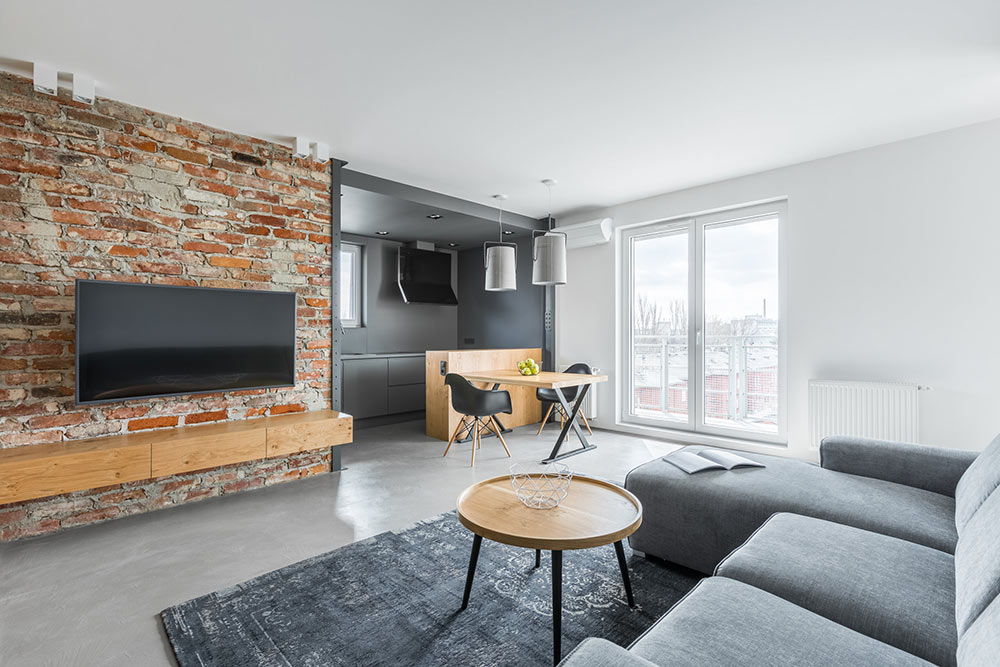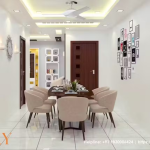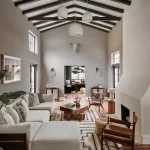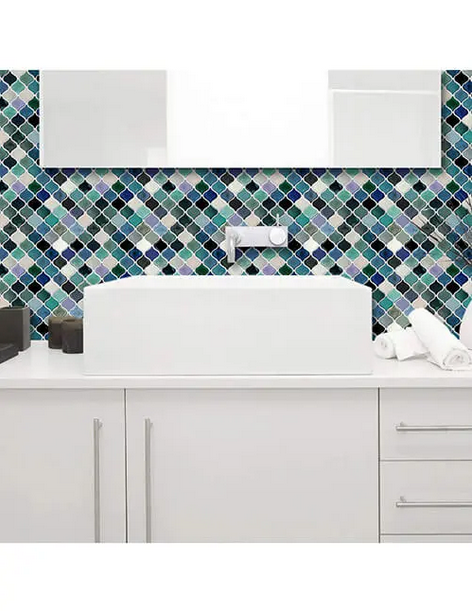Have you ever stepped into someone’s home and felt a wave of calm wash over you, or perhaps a burst of energy that made you smile? Maybe you adore the tranquillity of clear surfaces and soft hues, or you thrive in a space brimming with colour, patterns, and knick-knacks collected over the years. Our living spaces aren’t just four walls—they’re mirrors of our inner selves, our moods, and our stories.
Today, let’s dive into two very different yet equally valid approaches to decorating: Minimalism, where simplicity and function reign, and Maximalism, where abundance and personal expression steal the show. By the end, you’ll have a clearer sense of which style feels like home to you—and maybe even ideas for blending the best of both worlds.
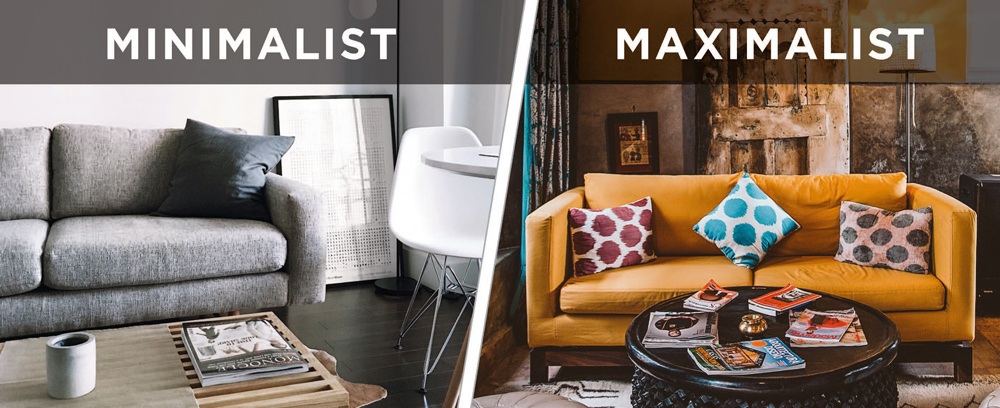
Content
Section 1: Understanding Minimalist Decor
The Beauty of Less: What Defines Minimalist Decor?
Minimalist decor is like a deep, steady breath for your home. It’s about choosing just what you need and letting every piece shine. Here’s what makes it tick:
- Negative Space: Those uncluttered corners and open expanses aren’t empty by accident—they give your eyes somewhere to rest.
- Quality Over Quantity: One well-crafted sofa or a single statement lamp can feel more luxurious than ten lesser items.
- Neutral Palette: Soft whites, warm greys, gentle beiges—colours that soothe rather than startle.
- Functional Pieces: From storage benches to sleek coffee tables, everything has a purpose.
Why You’ll Love It
- Waking up in a serene space can feel like starting the day with a clear mind.
- Less clutter means less cleaning—and more time for the things you enjoy.
- Even tiny apartments feel airier when you keep things pared back.
Who It Fits
If you’re someone who craves order and calm—if clutter stresses you out—minimalism can be like a comforting hug for your senses.
Example
Imagine your living room. You choose one statement wall art piece—a handcrafted Dhurrie-inspired painting—and place a single, elegant lamp beside a low-profile sofa. Soft, warm lighting and a cosy throw cushion complete the picture without overwhelming the senses.
Section 2: Exploring Maximalist Decor
More Is More: The Allure of Maximalist Decor
Maximalism is a love letter to creativity and personality. It’s all about embracing colour, texture, and cherished objects. Here’s what stands out:
- Vibrant Hues: Think jewel-tone pillows, bold rugs, and walls that pop.
- Mixed Styles: Vintage finds next to modern artworks, woven baskets beside metallic accents.
- Storytelling: Every shelf and tabletop tells a piece of your story—family heirlooms, travel souvenirs, favourite books.
- Layered Look: Rugs over rugs, cushions piled high, art hung salon-style.
Why You’ll Love It
- A maximalist room feels warm, lived-in, and full of character.
- It invites conversation—guests can’t help but comment on that funky lamp or quirky sculpture.
- You’re free to experiment and change things up whenever inspiration strikes.
Who It Fits
If you’re endlessly curious, love to collect memories, and find joy in visual excitement, maximalism is like a playground for your senses.
Example
Picture your dining area: patterned crockery stacked on open shelves, a gallery of mixed-media wall art overhead, layered rugs underfoot. Bold table linens, ornate vases filled with fresh flowers, and the soft glow of a decorative lamp complete the tableau.
Section 3: Comparing Minimalism and Maximalism
Minimalist vs. Maximalist: A Side-by-Side Comparison
| Aspect | Minimalist | Maximalist |
| Colours | Soft whites, greys, beiges | Rich jewel-tones, bright pops of colour |
| Furniture | Functional, multipurpose | Decorative, statement pieces |
| Upkeep | Quick tidy-ups, low maintenance | Regular styling, thoughtful curation |
| Mood | Calm, serene | Energising, playful |
| Decor Focus | Intentional, each piece matters | Abundant, every item has a story |
Minimalism whispers “serenity,” while maximalism shouts “self-expression.” Both aim to craft a space that feels true to you—whether through simplicity or exuberance.
Section 4: Finding Your Perfect Match
How to Decide Which Style Fits You Best
- Start With Questions
- Do open, airy rooms soothe you, or do you prefer snug, cosy corners?
- Does a neutral palette calm you, or do you crave bursts of colour?
- How much time do you want to spend tidying or rearranging?
- Do open, airy rooms soothe you, or do you prefer snug, cosy corners?
- Reflect on Your Routine
- Need a clear headspace for work or study? Minimalism could help you focus.
- Love entertaining and sparking conversations? Maximalism sets the perfect stage.
- Need a clear headspace for work or study? Minimalism could help you focus.
- Mix and Match
- Cozy Minimal: Pair simple furniture with a plush throw and a soft rug—just enough warmth without clutter.
- Tamed Maximal: Keep walls and big pieces neutral, then add accent cushions, art, or a lamp in bold hues.
- Cozy Minimal: Pair simple furniture with a plush throw and a soft rug—just enough warmth without clutter.
- Experiment in Small Doses
- Swap one throw pillow for a patterned one.
- Add a sculptural lamp to an uncluttered corner.
- Swap one throw pillow for a patterned one.
By starting small, you can discover what feels right—and tweak it until it feels like you.
Section 5: Practical Tips for Decorating
Getting Started: Tips for Both Styles
For Minimalists
- Choose furniture that does double duty (like ottomans with storage).
- Limit yourself to a simple palette—two or three neutrals at most.
- Keep surfaces clear; pick three “display” items max.
For Maximalists
- Layer different textures—think velvet cushions, woven baskets, metallic trays.
- Blend old treasures with new finds for depth.
- Don’t be shy: invest in one or two statement pieces that make you smile.
Universal Tip
Lighting can make or break a room. A thoughtfully placed lamp not only brightens a nook but also becomes a design feature in its own right.
Conclusion
Whether you’re drawn to the calm clarity of minimalism or the joyful vibrancy of maximalism, the goal is the same: to craft a space that feels authentically you. Your home is your personal canvas—so embrace the style that speaks to your heart, or blend elements of both until you find your perfect balance.
Go ahead, trust your instincts. After all, your décor should tell your story, your way—whether through the whisper of “less” or the chorus of “more.”

My name is Gwen Elmore. I post about home improvement ideas and how to make your home look beautiful and liveable. I hope my posts will help you with your DIY projects!

